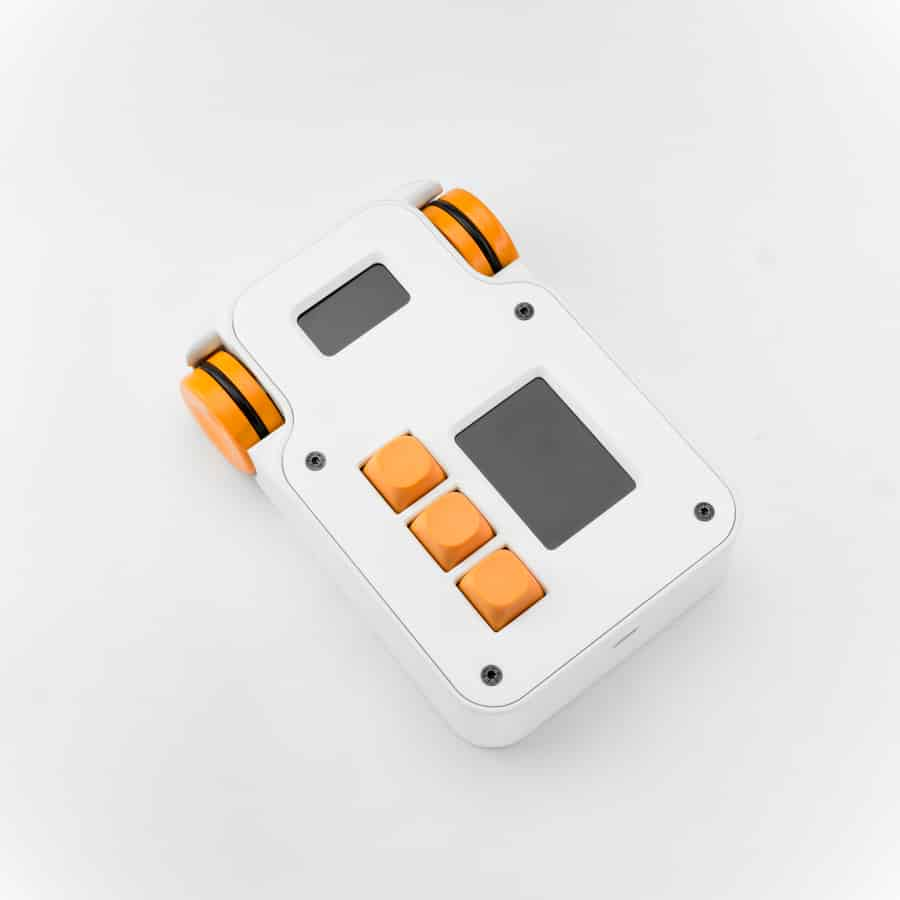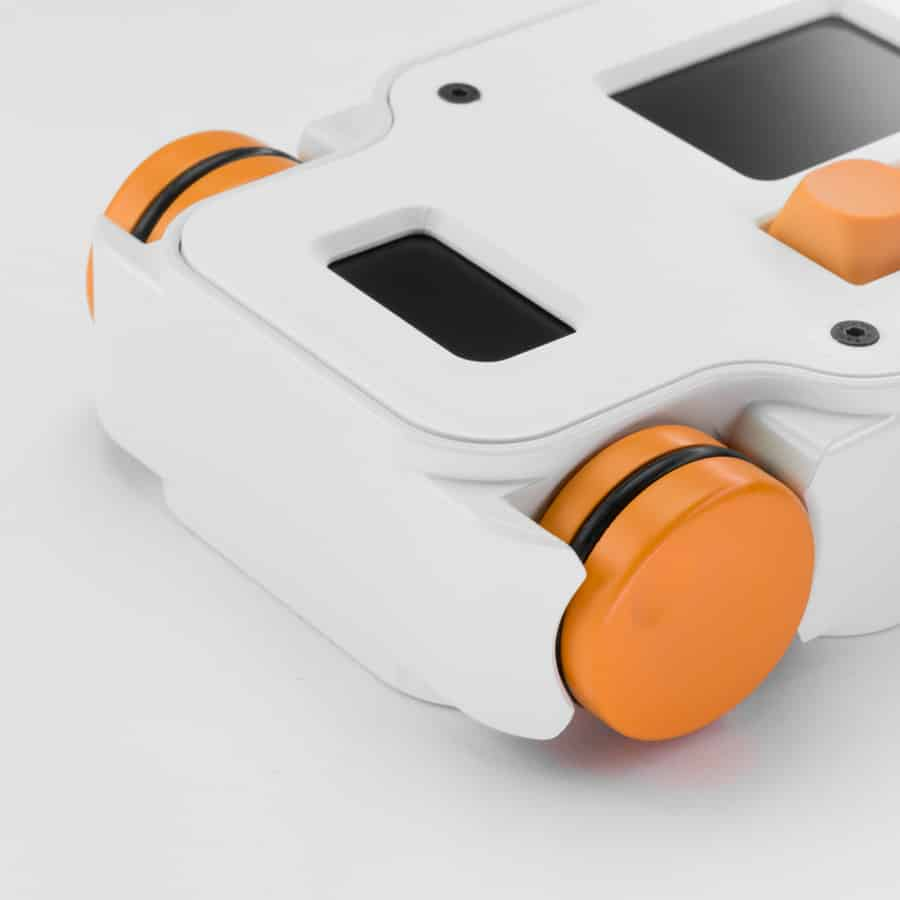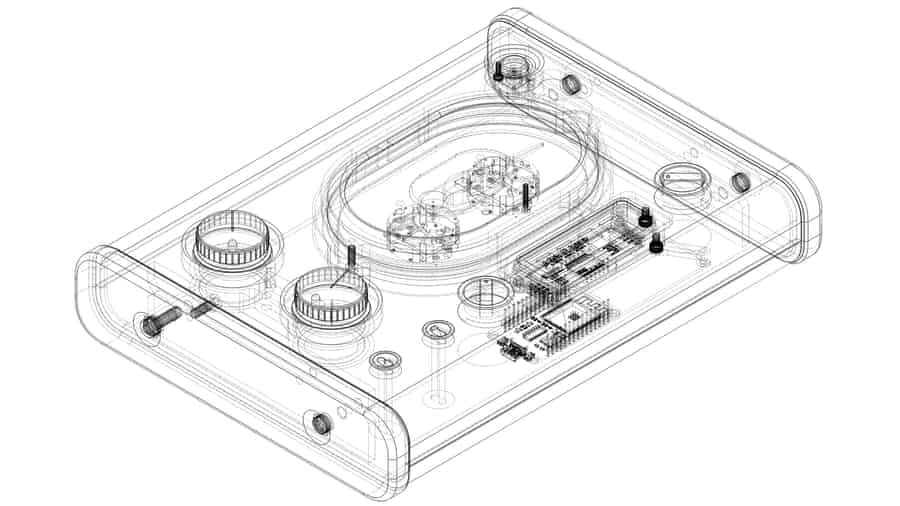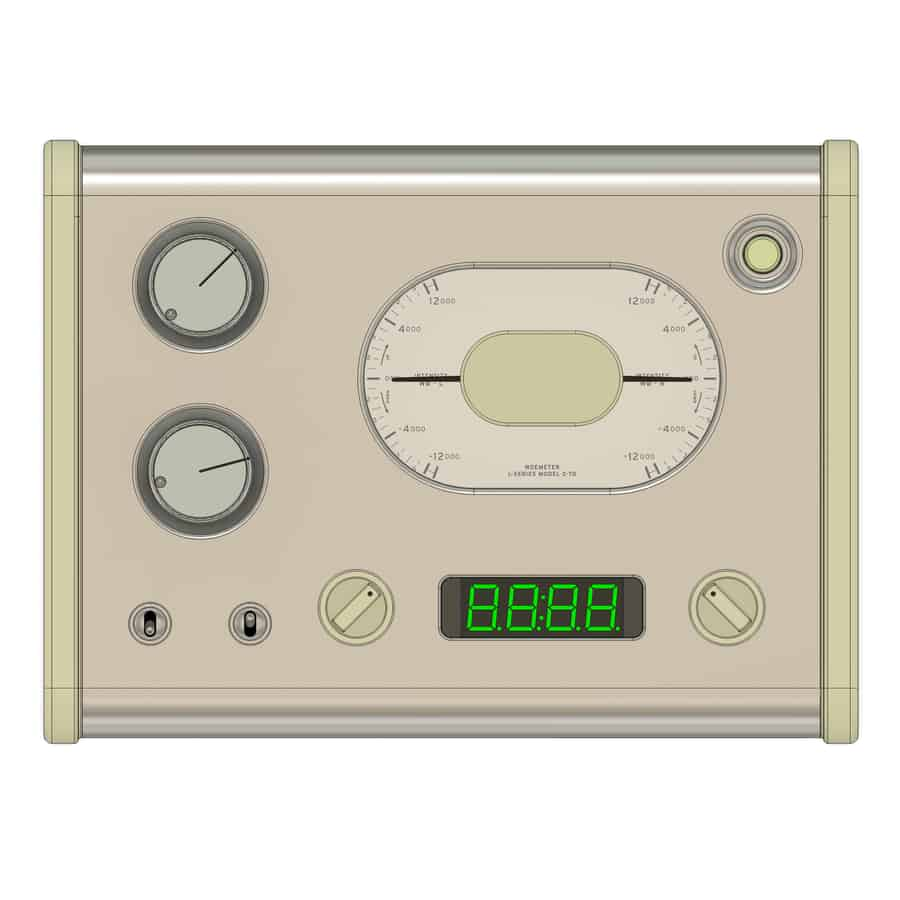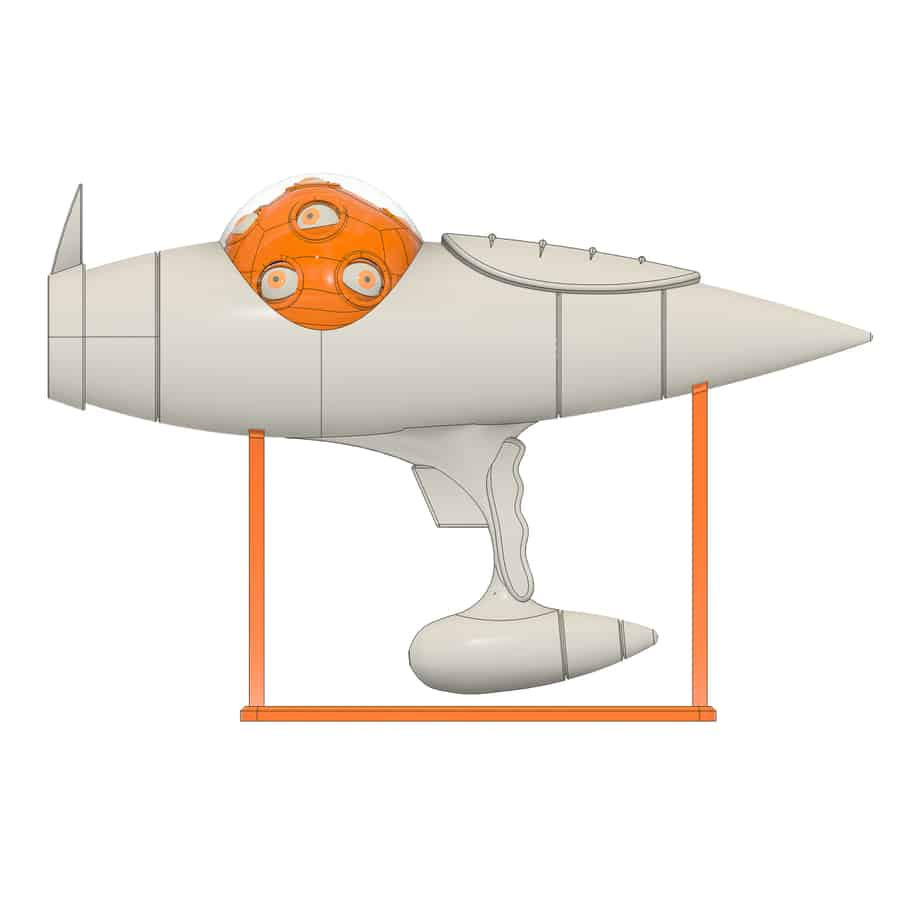make3 Control Machine
Project: make3
Requirements: To address the challenges of reliable wireless control on set, we designed and built the make3 Control Machine—a compact, precision-engineered device capable of seamless remote operation. Unlike commercial wireless protocols like Bluetooth and WiFi, which often struggle in environments saturated with competing signals, we implemented ESP-NOW, a low-latency, interference-resistant protocol optimized for real-time control.
Materials: Aluminum, 3D printed PETG, 3D printed resin, powder coated paint, ESP-32 microcontroller, custom designed PCB, rotary encoders and LCD screens.
Process: The fabrication began with the CAD design and 3D modeling of the Control Machine and all of it electronic components. We wanted a compact design that could house all components and still feel good in your hands. The main housing body was milled to of a single block of aluminum and the covers 3D printed using durable PETG material to achieve both structural integrity while alowing wireless signal penetration. The main body was powder coated to achieve a sleek finish and achieve durability.
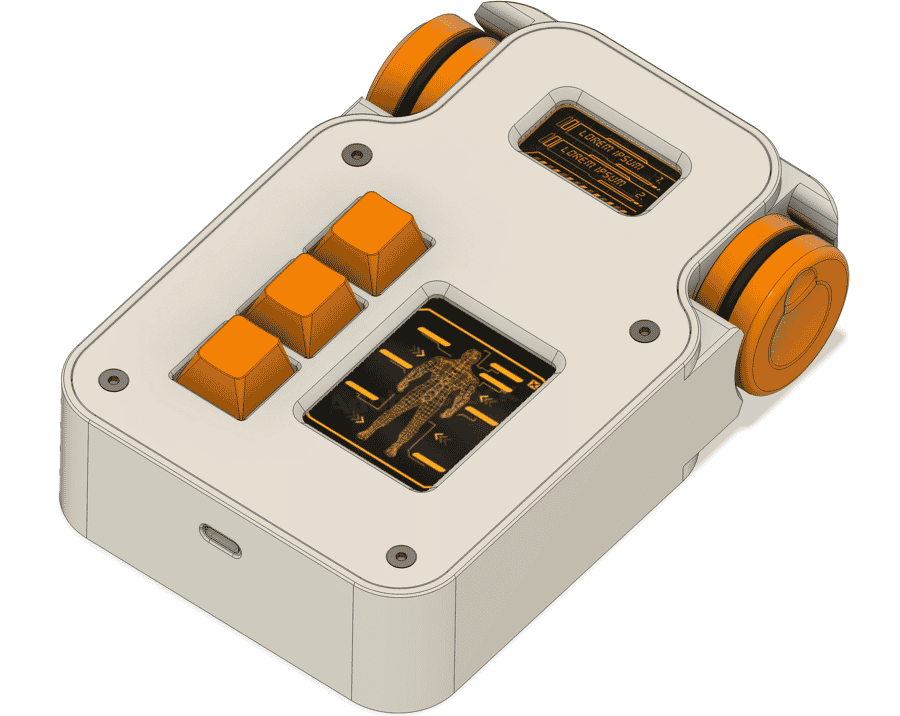

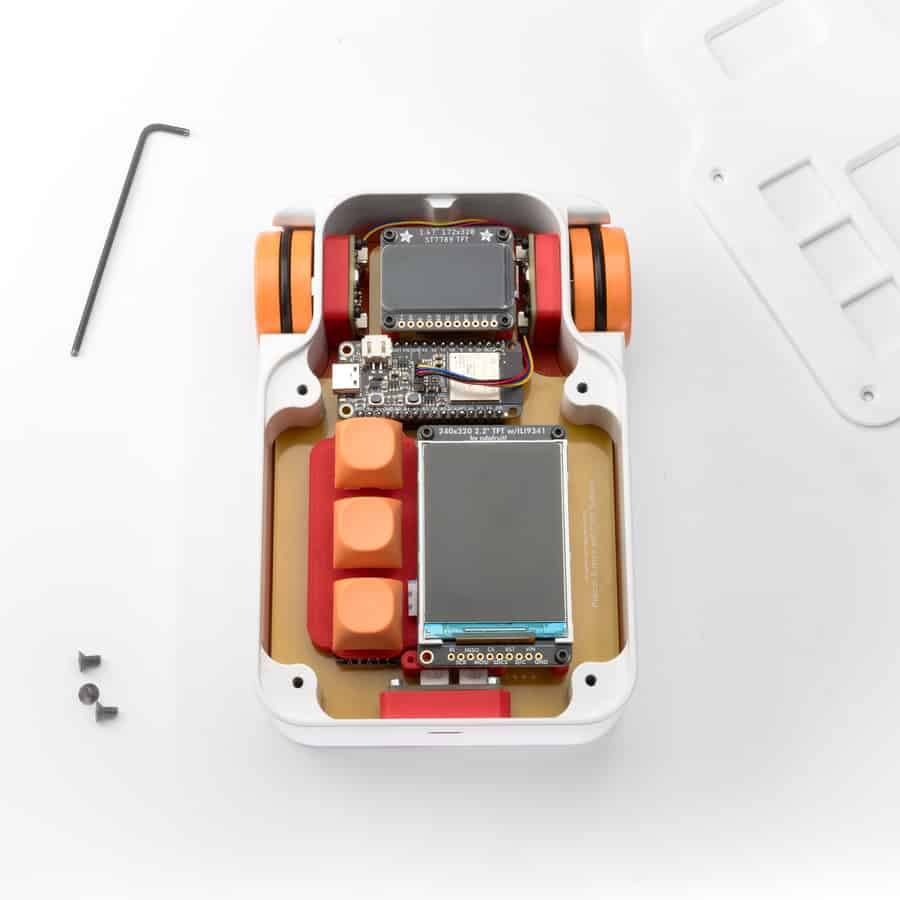
The Design Process
During a previous project, we developed a control mechanism that, while functional, felt clunky and inefficient. Due to tight production schedules, we didn’t have time to refine the design or implement the solutions we knew would improve performance. One major challenge was wireless interference—on busy sets, commercial protocols like WiFi and Bluetooth often struggle due to signal congestion from multiple competing devices.
So, we made it our mission to build the Control Machine—a device that solved everything we couldn’t before while addressing on-set wireless reliability.
Our goal was clear:
Create a beautifully functional object that felt good in hand and intuitive to use.
Fit as many components as possible into a compact, portable form.
Ensure effortless operation, making it a tool that works seamlessly in real-world scenarios.
Overcome on-set wireless interference by implementing ESP-NOW, a low-latency, interference-resistant protocol that allows direct, reliable communication between devices without relying on congested networks.
With these priorities in mind, we redesigned, refined, and engineered a control system that is as efficient as it is elegant—delivering precision, reliability, and seamless usability even in the most challenging environments.
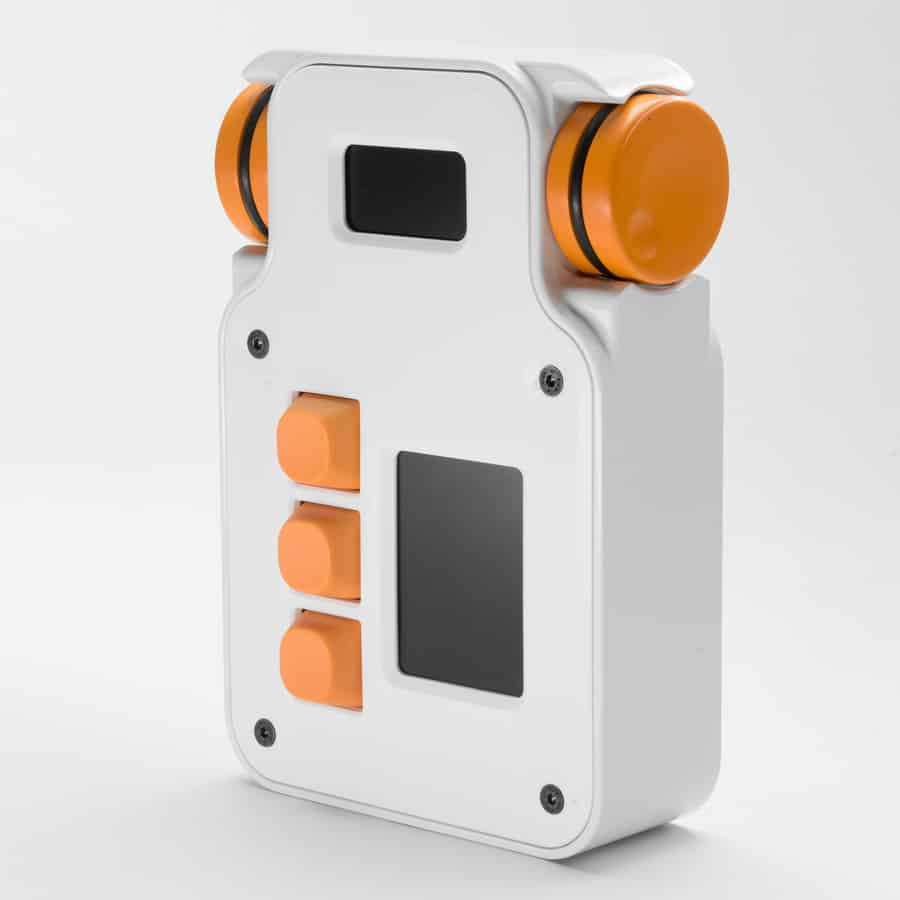
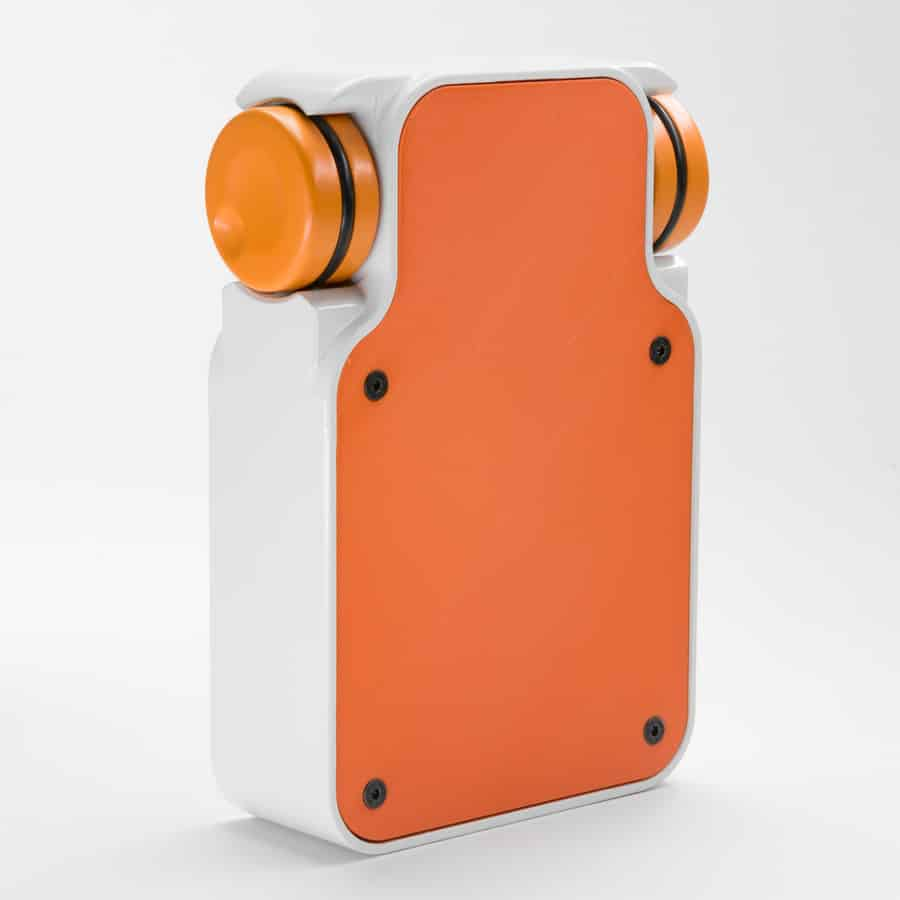
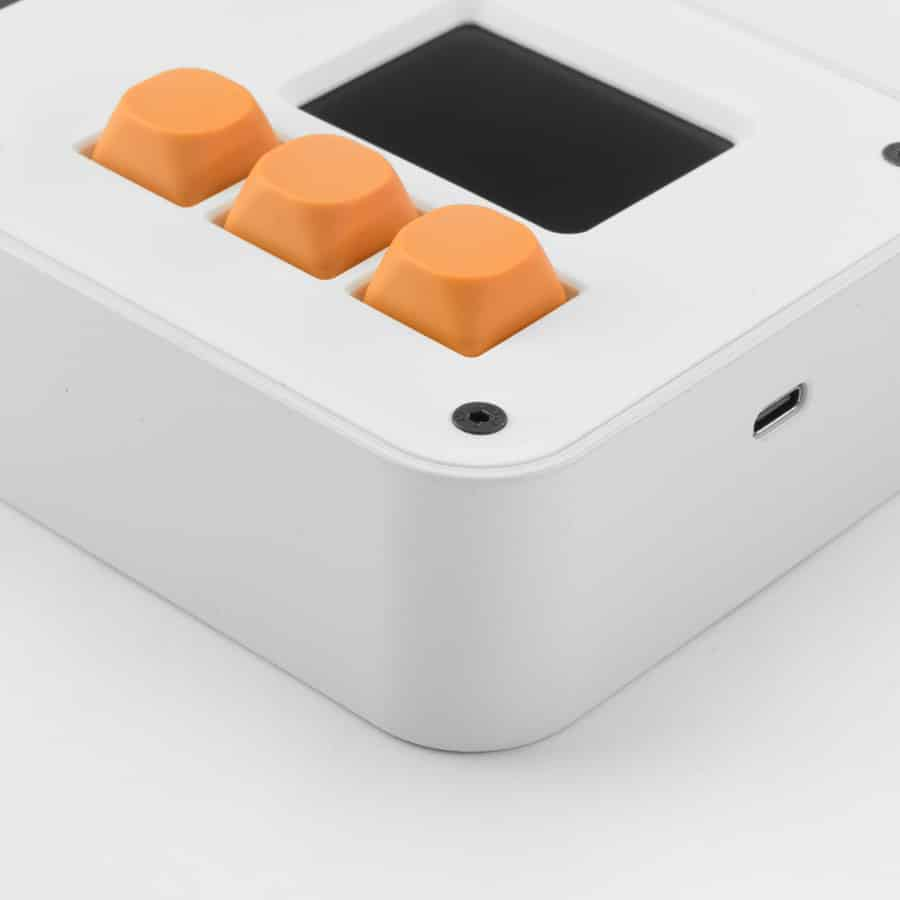
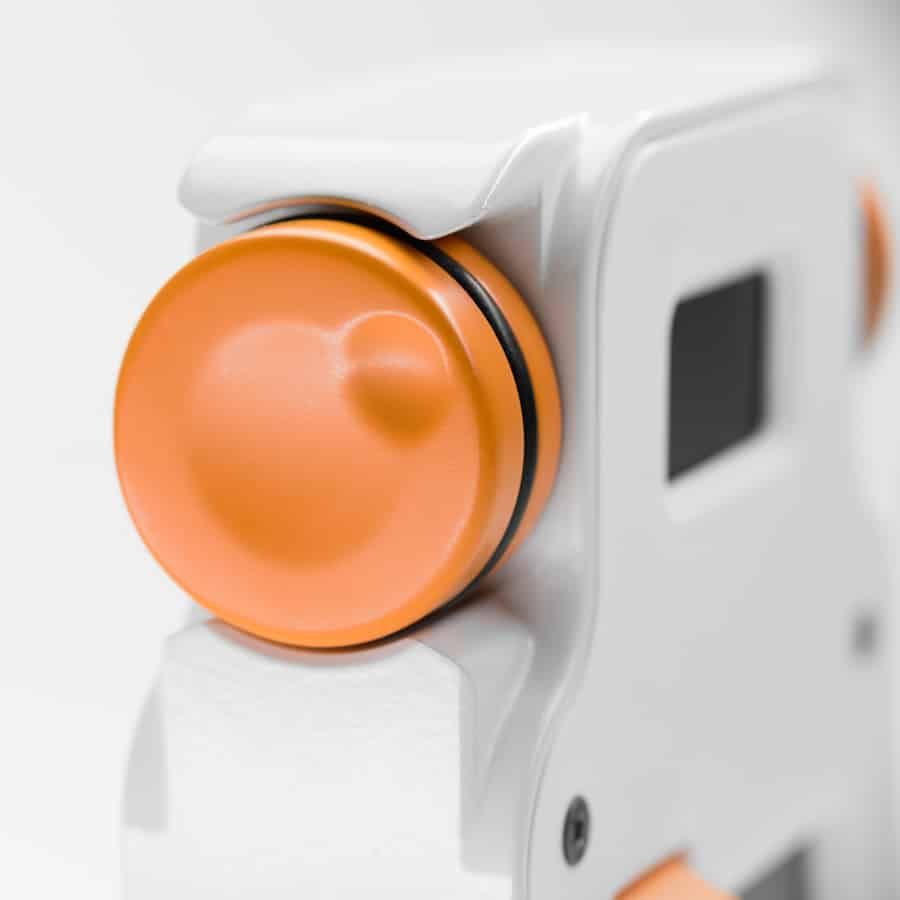

Mechanical and Electronics
The make3 Control Machine was engineered to be a versatile, wireless controller that balances precision, compact design, and future expandability. Every component was carefully selected to ensure seamless usability, serviceability, and adaptability for a wide range of applications.
Core Features & Functionality
Rotary Encoders for Precision Control – Smooth, responsive dials for fine-tuned adjustments.
Tactile Interface with Custom Buttons – Designed for intuitive event triggering and selection.
Compact Screens for Real-Time Feedback – Small, efficient LCD displays to maintain a tight form factor without sacrificing readability.
Off-the-Shelf Components for Serviceability – Built with readily available parts, ensuring easy sourcing and long-term maintenance.
ESP-NOW Wireless Connectivity – A low-latency, interference-resistant protocol that makes this a universal controller adaptable for future projects.
Over-the-Air Firmware Updates – Enables easy upgrades and feature expansions without the need for disassembly.
To optimize internal space and maintain a clean, organized design, we engineered a custom PCB, reducing bulk and simplifying assembly. All brackets and supports for electronic components were 3D-printed, ensuring a precise fit and structural integrity while keeping the build lightweight and efficient.
By prioritizing functionality, modularity, and ease of use, the make3 Control Machine is a powerful, adaptable tool that is ready for any future expansion while maintaining a sleek and compact design.
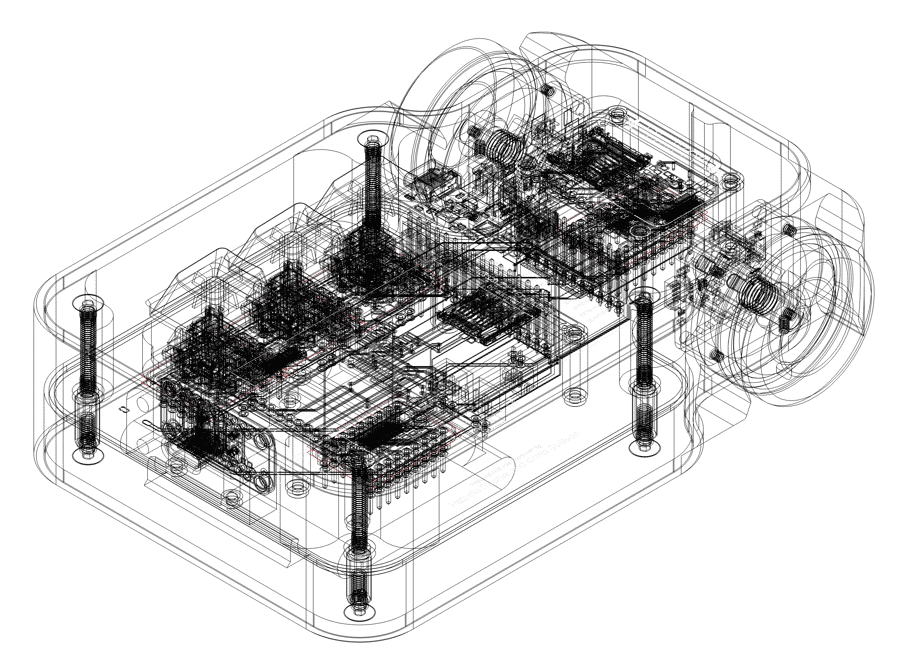
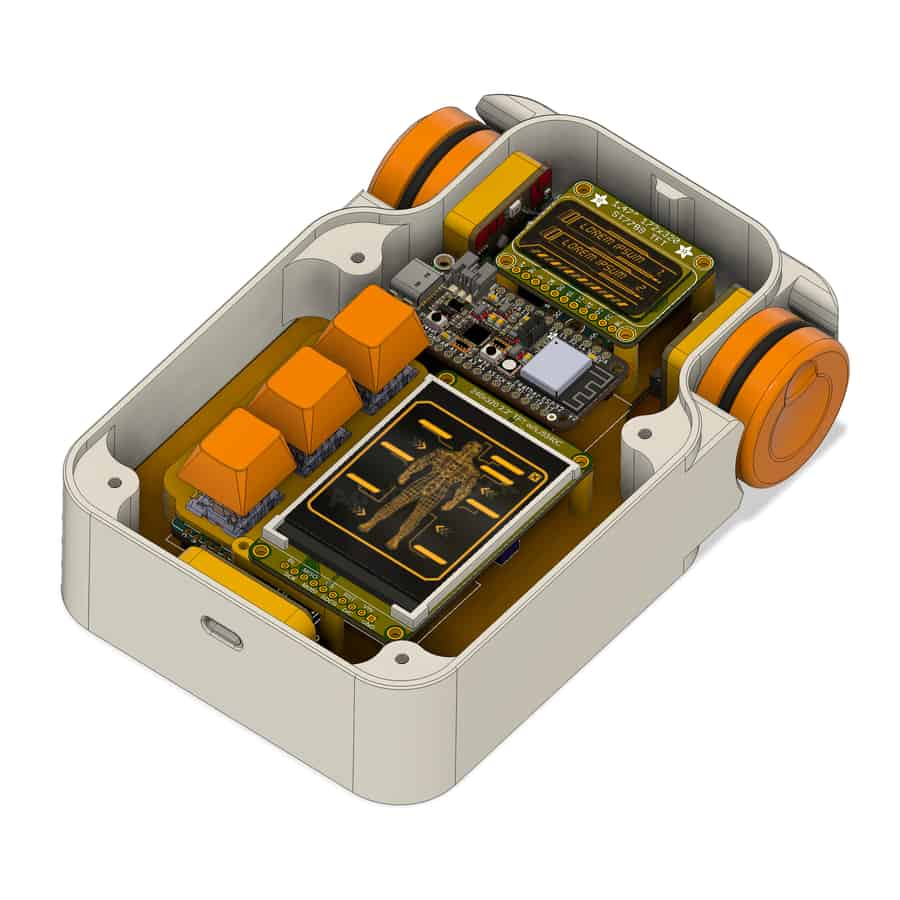
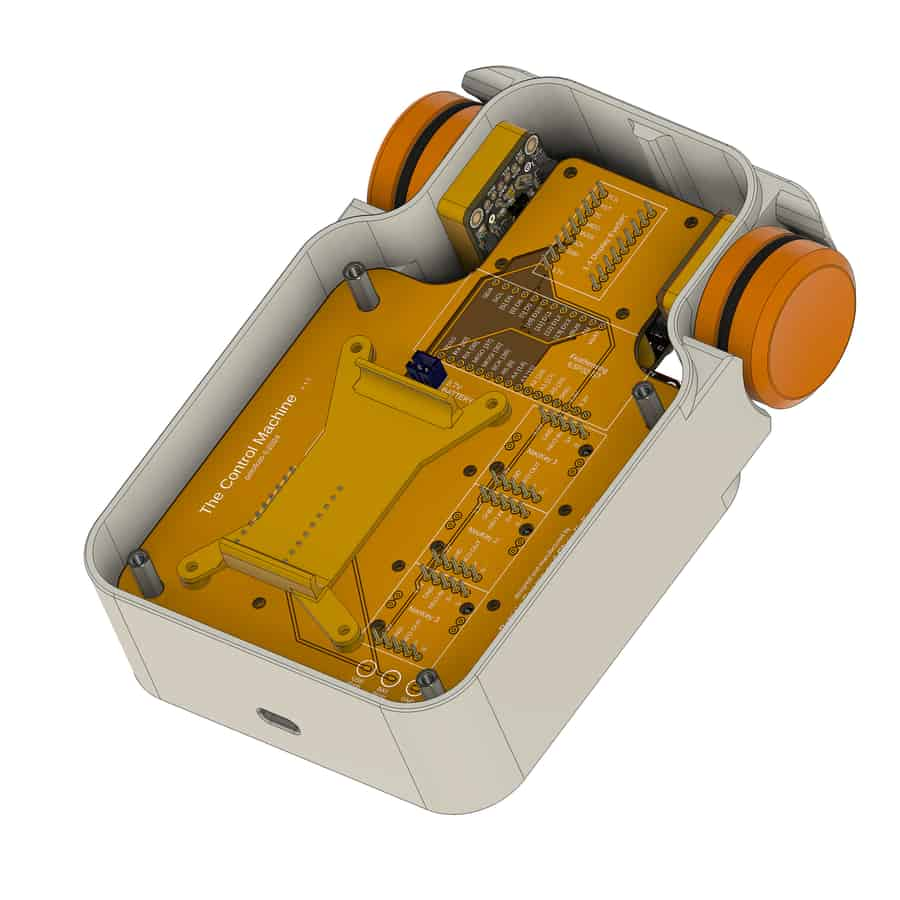
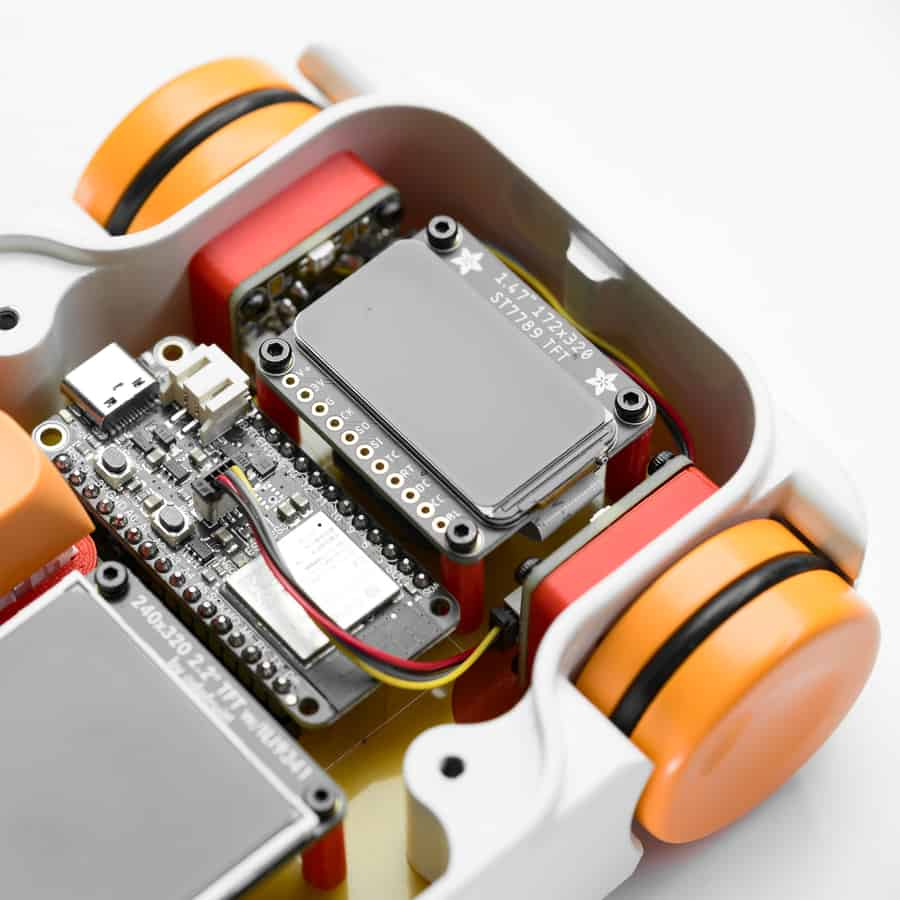
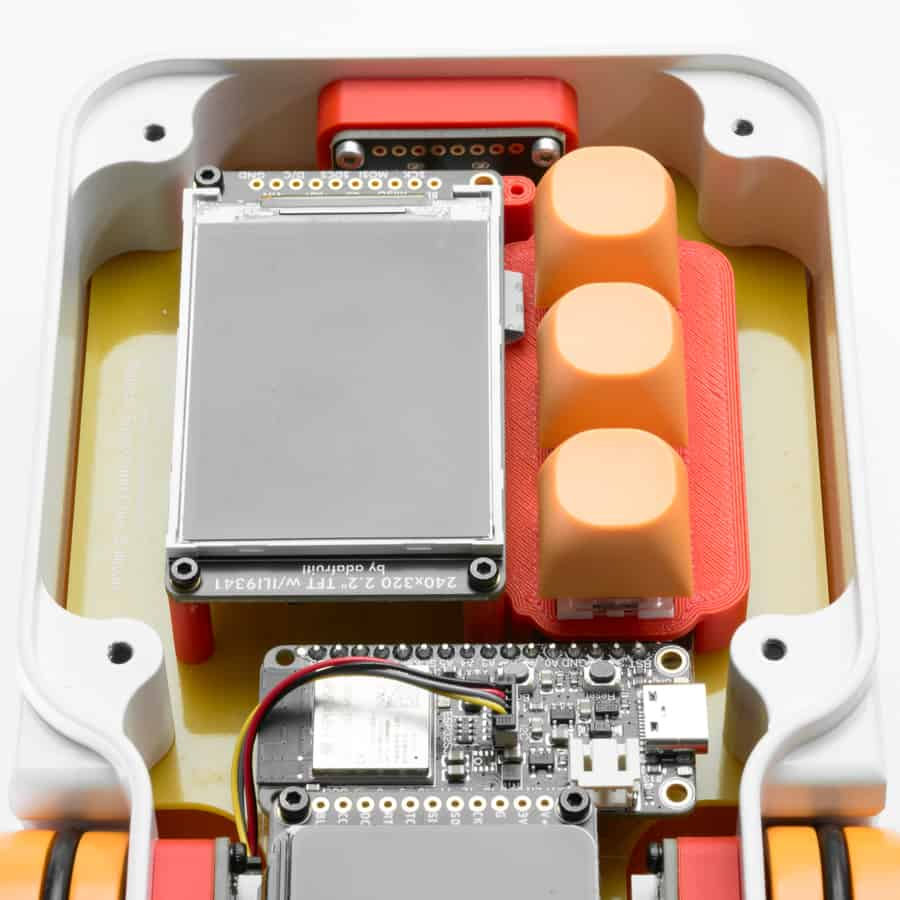
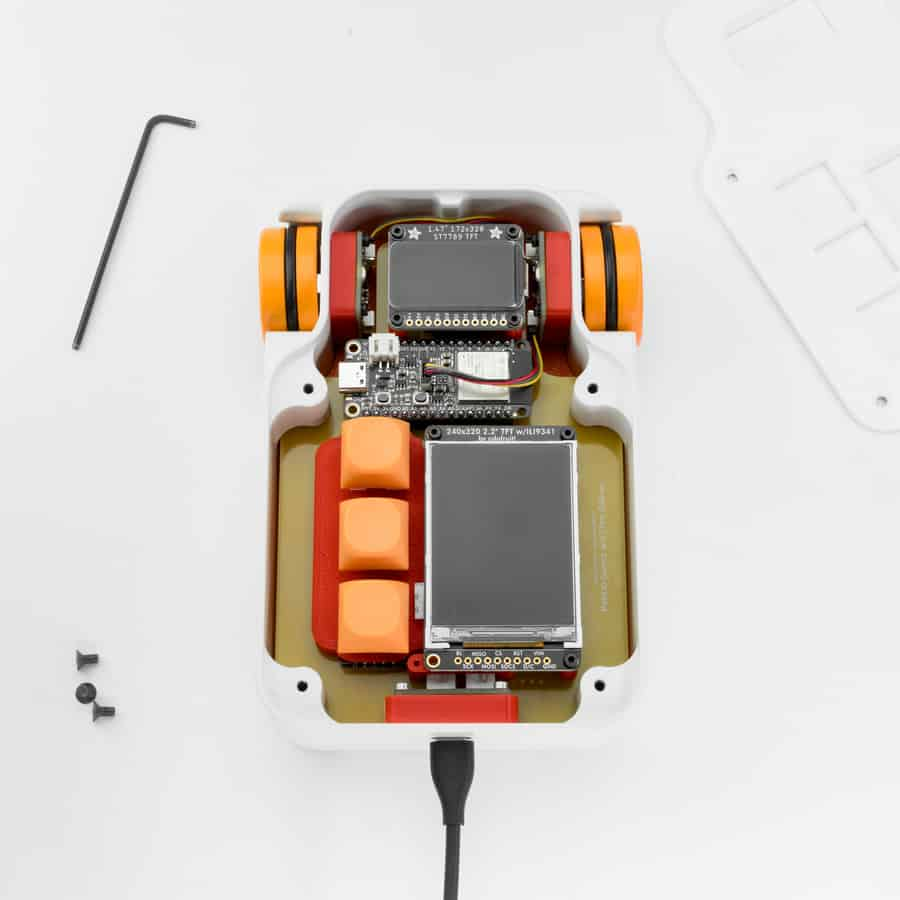
Assembly and Finishing
The Control Machine blends precision-milled, powder-coated aluminum with carefully tuned 3D-printed components, achieving a sleek yet functional aesthetic reminiscent of retro NASA design. Every detail was considered to ensure seamless assembly using mostly off-the-shelf components, making the build both efficient and adaptable.
At its core, this device is a collection of thoughtfully integrated components, designed with flexibility in mind. Thanks to our modular electronics approach, the same core functionality can be reimplemented into future designs, making it adaptable for a variety of projects.
Seeing it all come together has been incredibly rewarding—we couldn’t be more excited about the final result.
